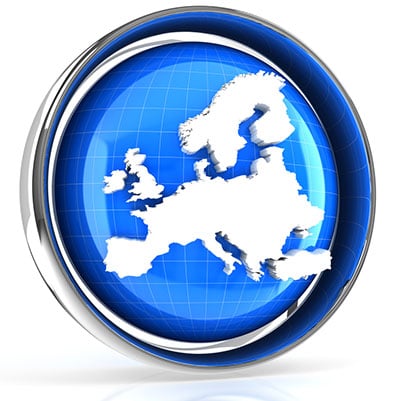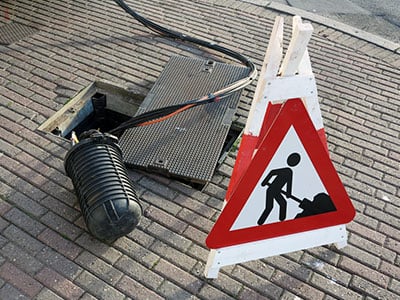 Earlier in February, I attended the 2015 FTTH Europe conference in Warsaw, where there seemed to be greater optimism around the European fiber market than in previous years. This was backed up by the annual IDATE figures released by the FTTH Council Europe, which showed that the number of FTTH (Fiber to the Home) and FTTB (Fiber to the Building) subscribers had increased by 50% between 2013 and 2014.
Earlier in February, I attended the 2015 FTTH Europe conference in Warsaw, where there seemed to be greater optimism around the European fiber market than in previous years. This was backed up by the annual IDATE figures released by the FTTH Council Europe, which showed that the number of FTTH (Fiber to the Home) and FTTB (Fiber to the Building) subscribers had increased by 50% between 2013 and 2014.
In total, this means that there are now 14.5 million FTTH/FTTB subscribers in Europe, with a further 14.8 million in Russia and the Ukraine. Strong progress was seen in countries such as France, the Netherlands, Spain, Portugal and Romania, while Germany is poised to enter the rankings, as it approaches 1% of homes subscribing to fiber. Lithuania continues to top the charts, with nearly 35% of households benefiting from fiber broadband, followed by Sweden and Latvia.
According to a related report from Heavy Reading’s Graham Finnie, subscriber numbers will double by the end of 2019 across the 44 countries he surveyed, which stretch from Iceland to Kazakhstan. This predicted 62 million high speed fiber to the home connections, which includes apartments in multiple dwelling units, will represent around 19% of the households in the region.
Patchy progress
That’s the good news. However, both studies pointed to a group of countries where FTTH/B has yet to grow significantly. Belgium, the Czech Republic, Austria and the UK each connected 20,000 new FTTH customers during 2014. Slow progress will make it difficult to hit the European Union’s Digital Agenda target of 50% of households receiving 100 Mbps broadband by 2020.
It is also sobering to compare European growth with other countries across the world. 85% of homes in the United Arab Emirates (UAE) and 63% of those in South Korea are FTTH subscribers, for example. New US rollouts mean that fiber broadband penetration rates there are ahead of many European countries, including France, Spain, Germany, Italy and the UK.
 There are a number of reasons for the varied growth in FTTH within Europe. The economy within the Eurozone remains weak, leading to many operators putting fiber expansion plans on hold and some governments to scale back support for national fiber infrastructures. Perhaps most of all, there is no single killer app for FTTH. We’ve previously discussed some of the potential uses of superfast broadband, from 4K TVs to the Internet of Things, but they have yet to achieve mass-market penetration in Europe.
There are a number of reasons for the varied growth in FTTH within Europe. The economy within the Eurozone remains weak, leading to many operators putting fiber expansion plans on hold and some governments to scale back support for national fiber infrastructures. Perhaps most of all, there is no single killer app for FTTH. We’ve previously discussed some of the potential uses of superfast broadband, from 4K TVs to the Internet of Things, but they have yet to achieve mass-market penetration in Europe.
This leads to a dilemma for operators – they understand the need for FTTH, but high installation costs mean it is simply seen as too expensive to embark on now, rather than in the future. Many incumbents are looking at ways of squeezing more from their existing copper networks, such as G.Fast, and putting off replacing the last mile connection.
Moving the debate from theory to practice
It is in this area of cost focus that I think Europe is behind other regions, such as the Americas. The presentations at the FTTH Europe show were dominated by discussions at a macro level about the need for, and advantages of, fiber broadband, with very little about the technical considerations of installing networks. Many appeared pretty similar to those I saw either last year or even the year before. Given that everyone at the event works in the FTTH industry and understands the benefits, it is time to move the debate on. In contrast, the OSP Show in the US is much more practical, looking at how operators and installers overcome the cost challenges of fiber rollouts and manage CAPEX and OPEX budgets successfully.
Smart operators see the opportunity to win customers now, rolling out fiber - particularly in cities - in order to gain a first mover advantage. The growth we are seeing in subscribers demonstrates this, particularly with innovative projects that are being rolled out by new entrants and municipalities looking to compete with incumbent telcos.
However, more can be done; I’d like to see the FTTH Council Europe event recognize that the goalposts have shifted and to spend more time addressing the question “FTTH is really expensive – how do we make deployment more cost-effective?” That will help move the industry in Europe forward, and help expand the entire market.
Last year, I said that FTTH in Europe was still searching for a compelling event to kickstart growth. It may not have found it yet, but the strong figures show that progress is accelerating, and as more and more people see the benefits of FTTH, it should drive more interest and subscribers. What it needs is a renewed focus from the industry, led by the FTTH Council Europe, if it is to overcome the cost challenges that are holding it back.


